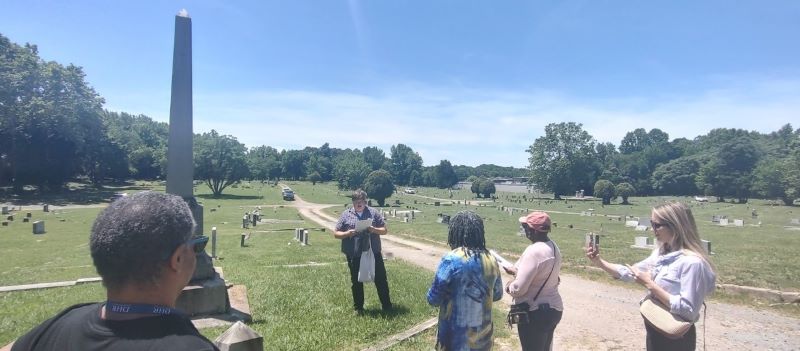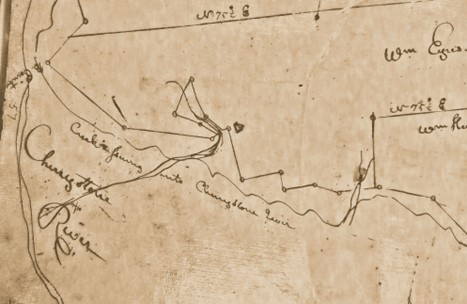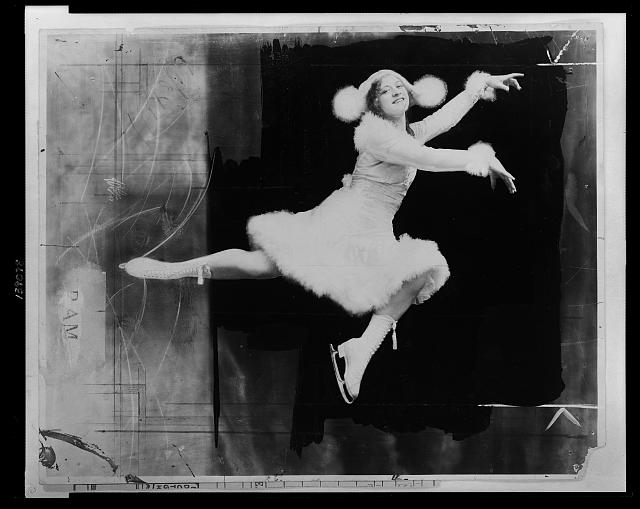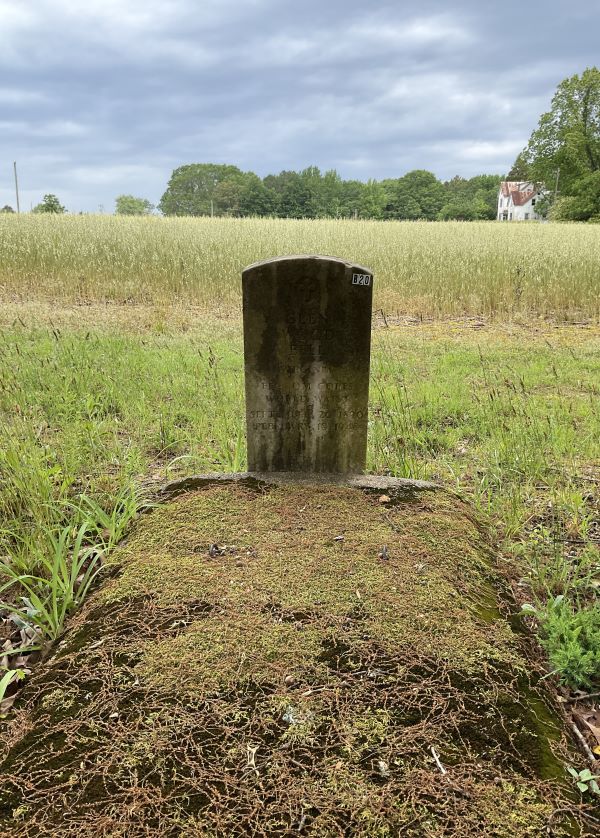Spotlight on Collections: Online Sources for Identifying Artifacts
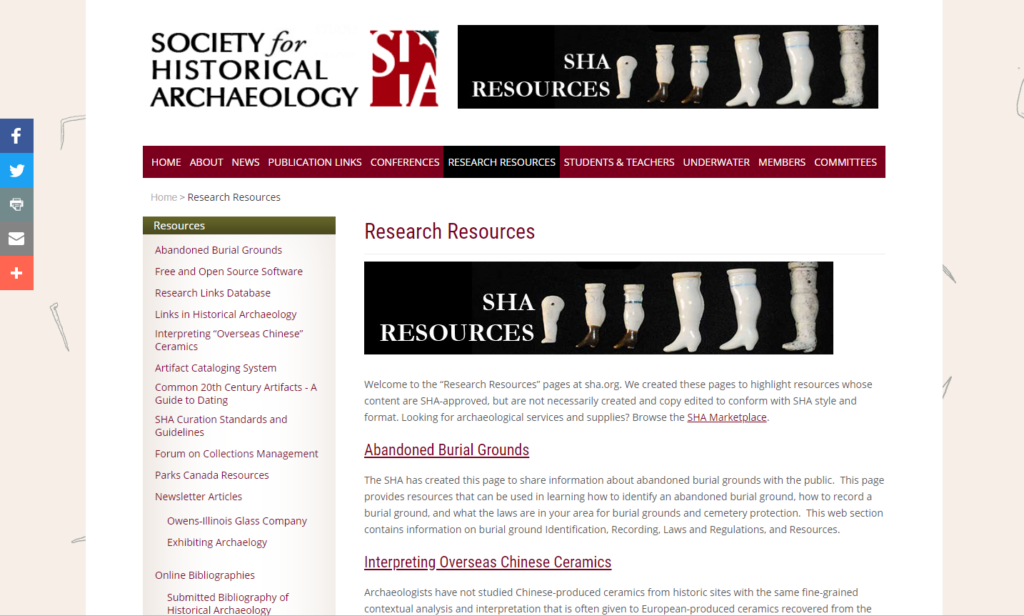
For this blog penned by State Archaeologist Dr. Elizabeth Moore, we take a detour from strictly focusing on DHR Collections and move beyond to highlight online collections useful for research.
Have you ever wondered how archaeologists identify all of the many artifacts that they recover in the field?
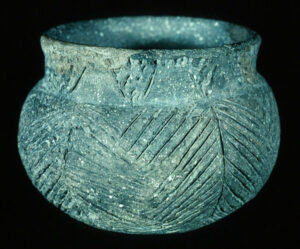 Learning to identify artifacts is not a superhuman memory power, it comes from years of experience and knowing where to look for information. I’ve gathered some of my favorite online artifact identification resources below. Some of these are useful for specific types of artifacts, some are good for broader categories of materials, and some are just fun to browse to see what other people have found at their sites.
Learning to identify artifacts is not a superhuman memory power, it comes from years of experience and knowing where to look for information. I’ve gathered some of my favorite online artifact identification resources below. Some of these are useful for specific types of artifacts, some are good for broader categories of materials, and some are just fun to browse to see what other people have found at their sites.
Virginia Projectile Points and Native American Ceramics
I would be remiss if I didn’t start this list with DHR’s own online tools for identifying artifacts. These two sites provide comprehensive information on Native American points and ceramics in Virginia.
DHR Projectile Point and Lithic Types: https://www.dhr.virginia.gov/division-of-state-archaeology-collections/projectile-points-lithic-types/
DHR Prehistoric Ceramics: https://www.dhr.virginia.gov/Ceramics/DHR-NACeramics.html.
Historic Artifacts
Maryland’s Jeffer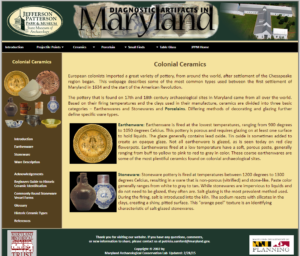 son Patterson Park and Museum has one of the more comprehensive websites for identifying artifacts in the Eastern United States. While they have many pages for small finds, projectile points, and table glass, they have extensive information on a large number of ceramic types with accompanying photographs. From this page you can navigate to their pages on other artifact categories.
son Patterson Park and Museum has one of the more comprehensive websites for identifying artifacts in the Eastern United States. While they have many pages for small finds, projectile points, and table glass, they have extensive information on a large number of ceramic types with accompanying photographs. From this page you can navigate to their pages on other artifact categories.
https://apps.jefpat.maryland.gov/diagnostic/ColonialCeramics/index-colonial.html
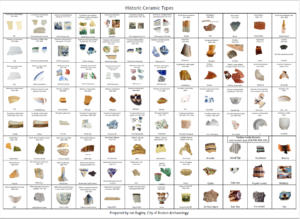 For those of you who would like to print a color poster to have to help with your ceramic studies, Joe Bagley of City of Boston Archaeology prepared this poster, which can be downloaded here:
For those of you who would like to print a color poster to have to help with your ceramic studies, Joe Bagley of City of Boston Archaeology prepared this poster, which can be downloaded here:
https://apps.jefpat.maryland.gov/diagnostic/HistoricCeramicTypesChart.pdf
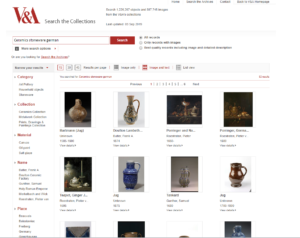 The Victoria and Albert Museum, located in London, England, has extensive collections with photographs of many objects online. You can see European, Middle Eastern, and East Asian Ceramics at The Victoria and Albert Museum here:
The Victoria and Albert Museum, located in London, England, has extensive collections with photographs of many objects online. You can see European, Middle Eastern, and East Asian Ceramics at The Victoria and Albert Museum here:
https://www.vam.ac.uk/collections/ceramics#objects.
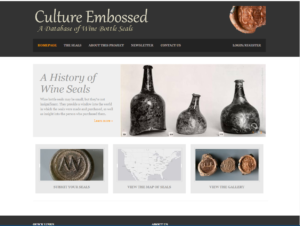 The Council of Virginia Archaeologists (COVA) hosts three sites designed to collect and share information about three specific artifact types: wine bottle seals, marked European clay tobacco pipes, and projectile points. They can be found here:
The Council of Virginia Archaeologists (COVA) hosts three sites designed to collect and share information about three specific artifact types: wine bottle seals, marked European clay tobacco pipes, and projectile points. They can be found here:
Culture Embossed (wine bottle seals): http://www.cova-inc.org/wineseals/index.php
Culture Impressed (marked European clay tobacco pipes): http://www.cova-inc.org/pipes/
Culture in Stone (projectile points), http://www.cova-inc.org/points/
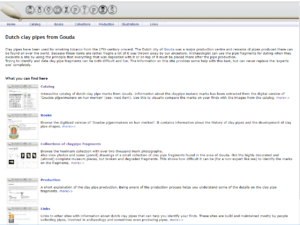 For information on Dutch clay pipes, the website Dutch Clay Pipes from Gouda has extensive information including a catalog of pipe marks, an explanation of pipe production, and photographs from their collections:
For information on Dutch clay pipes, the website Dutch Clay Pipes from Gouda has extensive information including a catalog of pipe marks, an explanation of pipe production, and photographs from their collections:
For information on British pipes visit the National Pipe Archive, located at the University of Liverpool. Their website isn’t as sophisticated as some others but they have some valuable information about British pipes as well as some other artifact types made of pipe clay such as hair curlers, marbles, and figurines. http://www.pipearchive.co.uk/index.html
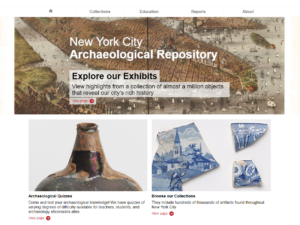 One of my favorite websites to browse is hosted by the New York City Archaeological Repository: The Nan A. Rothschild Research Center. NYC archaeologists have created a website that provides maps of sites, links to reports, and photographs of hundreds of thousands of cataloged artifacts.
One of my favorite websites to browse is hosted by the New York City Archaeological Repository: The Nan A. Rothschild Research Center. NYC archaeologists have created a website that provides maps of sites, links to reports, and photographs of hundreds of thousands of cataloged artifacts.
If you have used one of the other websites listed here to learn about an artifact type, creamware for example, you can then search for creamware at the NYC site and see thousands of pieces that have been recovered from archaeological sites. If you see an interesting design or fragment, you can click on it to learn more about that piece including when it was made, at which sites it was found, descriptions of those sites, and specific contexts in which the artifact was found (i.e., well, privy, midden, etc.). You could then click to a photo of all artifacts found in each context. I will caution you, this website will lead you down trails of fascinating information and photographs and before you know it you will have spent hours exploring the archaeology of New York City: http://archaeology.cityofnewyork.us.
Faunal Remains
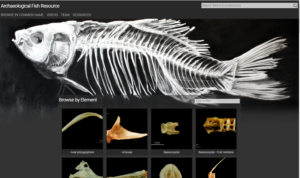 For those of you interested in identifying animal bones, there are a number of useful websites. Here are some of the ones I use most frequently:
For those of you interested in identifying animal bones, there are a number of useful websites. Here are some of the ones I use most frequently:
Fishbone, hosted by the University of Nottingham:
http://fishbone.nottingham.ac.uk/
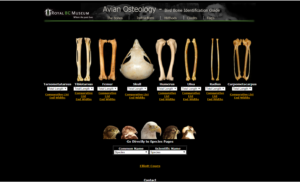 Avian Osteology, hosted by the Royal BC Museum:
Avian Osteology, hosted by the Royal BC Museum:
https://royalbcmuseum.bc.ca/Natural_History/Bones/homepage.htm
Aves 3D: http://www.boneid.net/
BoneID.net, designed for non-bone specialists: http://www.boneid.net/
Comparative Osteology, a website to supplement the book by the same name, to help non-specialists identify human and non-human remains: http://booksite.academicpress.com/9780123884374/index.php
Fish Remains, hosted by the Bishop Museum in Hawaii: http://hbs.bishopmuseum.org/frc/about.html
Pictorial Skeletal Atlas of Fishes, hosted by the Florida Museum of Natural History: https://www.floridamuseum.ufl.edu/fishatlas/
Miscellaneous
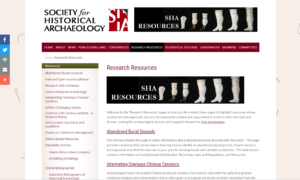 Finally, the Society for Historical Archaeology (SHA), https://sha.org/resources/, has extensive research resources listed on its website. From a link to the Parks Canada Guide to British Military Glass to a guide to dating 20th century beer cans, the SHA website can probably help with whatever you find.
Finally, the Society for Historical Archaeology (SHA), https://sha.org/resources/, has extensive research resources listed on its website. From a link to the Parks Canada Guide to British Military Glass to a guide to dating 20th century beer cans, the SHA website can probably help with whatever you find.
--Elizabeth Moore, State Archaeologist, DHR

